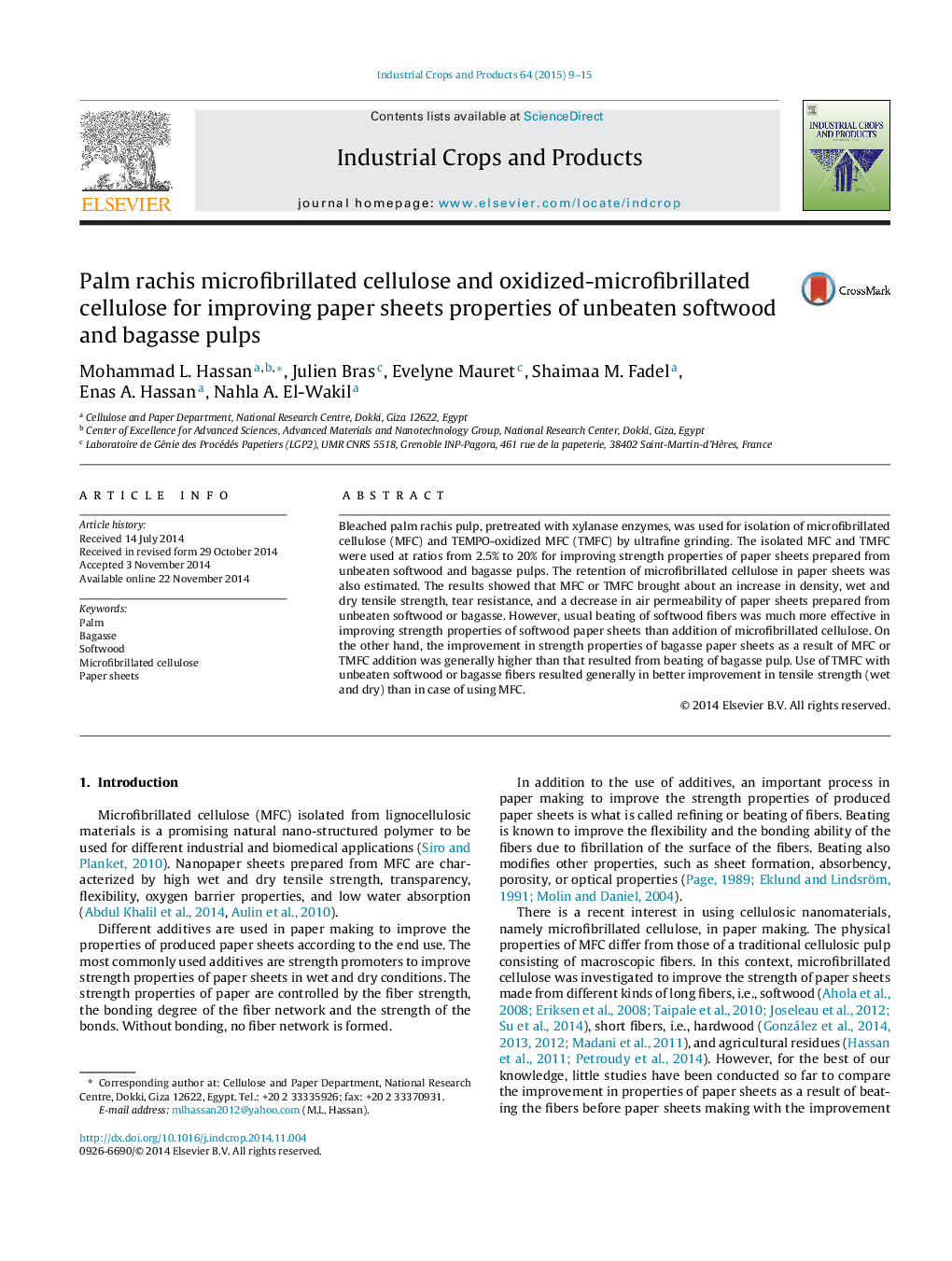| Article ID | Journal | Published Year | Pages | File Type |
|---|---|---|---|---|
| 4513023 | Industrial Crops and Products | 2015 | 7 Pages |
•Microfiberillated cellulose (MFC) and TEMPO-oxidized MFC (TMFC) were isolated from palm rachis.•The isolated nanofibers were used to improve paper sheets properties.•Properties of softwood and bagasse paper sheets were studied.•TMFC brought about higher improvement in mechanical properties than MFC.
Bleached palm rachis pulp, pretreated with xylanase enzymes, was used for isolation of microfibrillated cellulose (MFC) and TEMPO-oxidized MFC (TMFC) by ultrafine grinding. The isolated MFC and TMFC were used at ratios from 2.5% to 20% for improving strength properties of paper sheets prepared from unbeaten softwood and bagasse pulps. The retention of microfibrillated cellulose in paper sheets was also estimated. The results showed that MFC or TMFC brought about an increase in density, wet and dry tensile strength, tear resistance, and a decrease in air permeability of paper sheets prepared from unbeaten softwood or bagasse. However, usual beating of softwood fibers was much more effective in improving strength properties of softwood paper sheets than addition of microfibrillated cellulose. On the other hand, the improvement in strength properties of bagasse paper sheets as a result of MFC or TMFC addition was generally higher than that resulted from beating of bagasse pulp. Use of TMFC with unbeaten softwood or bagasse fibers resulted generally in better improvement in tensile strength (wet and dry) than in case of using MFC.
Graphical abstractMicrofibrillated cellulose and TEMPO-oxidized microfibrillated cellulose were extracted from palm rachis and used to improve paper sheet properties of non-beaten softwood and bagasse fibers. The improvement was compared to that occurred as a result of usually practiced beating of softwood and bagasse fibers.Figure optionsDownload full-size imageDownload as PowerPoint slide
